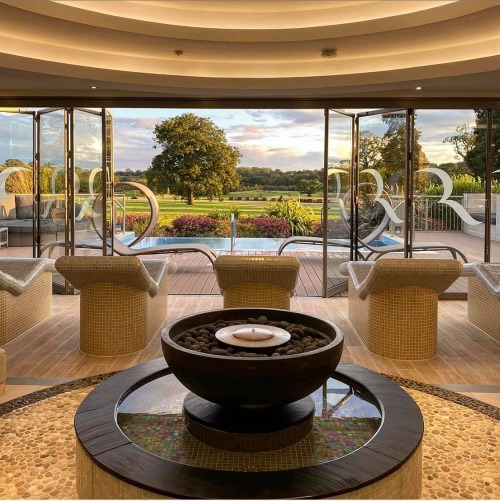Northumberland's International Dark Skies Park Celebrates its 10th Anniversary

Awarded gold tier status back in 2013, Northumberland International Dark Sky Park is celebrating its 10th anniversary. Don't miss your chance to catch the captivating exhibition 'Dark Skies Matter'
Northumberland is known across the world for its great natural beauty, as well as its dark skies – and over the last 10 years Northumberland National Park Authority and its partners have been working hard to keep our skies dark and pristine. Someone who has been involved in the award of International Dark Sky status and worked at the park for more than 23 years, is visitor development and tourism officer Duncan Wise.
‘For the first 10 years (between 2000 and 2010) I wasn’t really involved in anything to do with Dark Skies, but was aware that Kielder Forest was beginning to attract a lot of astronomers. There were lots of star parties taking place and then obviously the building of the Observatory in 2008 marked a milestone in terms of the kind of offer they were developing,’ he says. Realising there was an opportunity to get protected status of the area, Northumberland National Park joined forces with Kielder Water & Forest Park to apply for a joint application.

In order to secure Dark Sky status they needed to provide evidence to Dark Sky International, the leading recognised authority combating light pollution worldwide. ‘Dark Sky International has created a series of designations to highlight those areas that have naturally pristine dark skies and they can either be awarded International Dark Sky Park or Reserve – if you’re more of an urban community you can be awarded International Dark Sky Community status,’ Duncan explains. Deciding to apply for Dark Sky Park status meant gathering evidence from across the National Park using light quality meters. ‘They measure the amount of light falling on a lens and you can take them out in the middle of the night and point them directly above your head. You then press a little button which calculates a figure, and if that figure is above 21 for example it demonstrates naturally, really dark skies. There are variations, so if you have a reading of 21.5 to 22 you are of a particular category (anything above 21 is good), but the higher the number the better,’ Duncan adds.
A team of volunteers took the light meters out across the park in the middle of the night over the darkest months of winter, plotting where these readings were taken. ‘We had to choose times very carefully because even the moon can effect readings, as it shines a bright light knocking out that sense of darkness. We then submitted these readings to Dark Sky International who could see how dark we were and could justify granting us the designation,’ Duncan continues.
It was important not only to show how dark the skies were, but also how the National Park was going to commit to conserving those pristine skies. This included any new development within the Park complying with advice on outdoor lighting, including the use of warm white lights rather than cold blue and ensuring the right amount of light for each purpose.
Dark Sky International granted Northumberland International Dark Sky Park gold tier status in December 2013. Since then thousands of visitors have taken part in Dark Sky experiences, and brought £25 million per year into the local economy. ‘We had worldwide publicity because of getting the designation which we would have never been able to afford, and we had a lot of interest from local businesses who thought they might be able to tap into that,’ Duncan says. Rural businesses, which often struggled in the quieter autumn and winter months, now had an attraction they could get visitors involved with.
Celebrating 10 years since being awarded gold tier status, Northumberland International Dark Sky Park are hosting a number of exhibitions and events, and Kielder Observatory commissioned a short film on behalf of Northumberland Dark Sky Partnership which highlights the importance of keeping our skies dark. ‘This isn’t just for the privilege of those who live or work in a Dark Sky Park – everyone in the North East deserves better light and the ability to look up into the night sky and out onto their galactic neighbourhood without the intrusion or the blanketing of light pollution,’ Duncan says. ‘We wanted to do something that was celebratory, and the two- to three-minute voxpop captures different voices of those who have been involved in the Dark Sky Park in one way or another.’
‘I was really drawn to thinking about dark skies
and the wider more holistic experience, wanting to
celebrate that not just from a human point of view’
Another part of the anniversary celebrations is Noctalgia: Dark Skies Matter, an exhibition at The Sill: National Landscape Discovery Centre which local artist Bethan Maddocks has created. ‘I’ve done a lot of work in Northumberland and a lot of my work celebrates the rural landscapes, the communities, the animals and ecologies of the area. I had a large commission last year called A Northumberland Menagerie, so this to a degree was following on the same lines,’ Bethan explains. ‘From the beginning, I was particularly drawn not just to the richness of the dark skies but also what those Dark Sky experiences allow you to have. For example if you’re stargazing, it gives you the chance to hear the hoot of an owl or the rustle of animals as they carry on their everyday lives under those dark skies. I was really drawn to thinking about dark skies and the wider more holistic experience, wanting to celebrate that not just from a human point of view.’
Noctalgia, meaning sky grief, is a new term invented by two American-based astronomers: Aparna Venkatesan and John Barentine. ‘I read it in a science journal and it’s by these two astronomers who do a lot of work with light pollution – they wanted a word to describe the pain associated with losing access to the night sky due to light pollution. I felt like it was a really poetic word but also one which harnessed a lot of the ideas I was trying to think about,’ Bethan explains.
Conducting as much research as she could, Bethan worked with a number of people to develop her art. ‘I worked with a couple of community groups including North East Sight Matters who support families with children with visual impairments, and also Deaf Awareness North East who are a community group of adults with hearing impairments. In both those sessions we explored light, shadow, perception and our stories and experiences of the night sky. I took a load of motors, hula hoops, cardboard tubes and paper and we had a go at building our own mechanised sculpture, with a chance for them to see how my process works.
Read More: How the Northumberland Open 2024 is Celebrating the 90th Anniversary of the Ashington Group

‘I also worked with a sound artist called Nick John Williams who developed the soundscape for the exhibition and we had lots of conversations about “the sound of space”, because in space there is no sound, but how you could capture that kind of expansive feeling of stars and ancient connections,’ Bethan explains. Part of her research for the exhibition also meant working with Northumberland National Park rangers, ecologists and archaeologists, as well as volunteers and staff at The Sill. ‘By working with Northumberland National Park staff I was able to really hone in on their ecological expertise and also that of the visitor staff who really know the kind of things visitors are asking and are interested in.’
Noctalgia: Dark Skies Matter is now open to the public. The sculptures are based on orreries which were invented in the 18th century and are mechanical models that map the movement of stars, planets and moons. ‘It was this era when people were really starting to delve into and understand our greater place in the universe. That was the starting point, but also thinking about how our ancestors looked at the stars from earth with their naked eye,’ explains Bethan.
As technology advances and our insight into the solar system and stars grows deeper, Bethan believes we are simultaneously losing our connection to the animals, plants and ecosystems which we share our planet with – and the exhibition is a chance to shed light on this. ‘I was really interested in making ecological orreries which explore our relationship with the plants and animals which use the night sky and stars to hunt, forage or to breed, so all the plants and animals you’ll see rely on the dark skies. Plants like bladder campion, evening primrose and honeysuckle are all different plants which pollinate at night time, specifically because moths are such good night pollinators and are far more efficient than bees.
‘You also have bats, owls and nightjars which rely on the night sky to forage, as well as migrating birds including swallows, redwings and whooper swans which actually migrate at night, using the starlight to migrate then breed and raise their young safely,’ Bethan explains.
One of the sculptures within the exhibition looks particularly at the moths of Northumberland. ‘One piece is entirely cut in paper and is called the Moth Moon, and celebrates all the moths which can be found in Northumberland. For this one I did lots of research, including working with a Facebook group called Northumberland and Durham Moths who are a group of amateur enthusiasts who put out moth traps throughout the year in their gardens (a moth trap is like a light in a box and moths are drawn to it and get trapped safely in the box) and the next day the group photograph them and put them online. I got a wide ranging sense of all the moths found across Northumberland and they are all paper cut into the Moth Moon sculpture,’ Bethan says.
Learning along the way, Bethan says that the aspect which has stuck with her the most has been the protection that our dark skies need. ‘Light pollution is one of our biggest ecological crises which can literally be fixed with a flick of a switch. For all these complicated problems we have, light pollution is a relatively simple one. Looking at it and considering whether we need to light up our garden or building and being more considered will make the world a far more inhabitable place for the many things which rely on our night skies,’ Bethan says.
Bethan says the exhibition is an invitation for adults to embrace their natural curiosity. ‘Whenever people see the work, they always talk about how they will have to bring their children or grandchildren along. Although the work has a childlike element or quality to it, children already know the awe of the natural world and they naturally want to be outside exploring, whereas as adults we often forget that. The work is an invitation to adults particularly to engage in their childlike awe of the natural world, to take a bit of time out and think about our place in wider ecologies and remind ourselves that we share this planet with lots of beings. It’s our duty to protect it for everything, not just ourselves.’
Noctalgia: Dark Skies Matter runs until 10th March 2024 at The Sill: National Landscape Discovery Centre.











